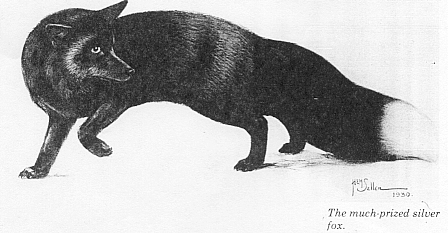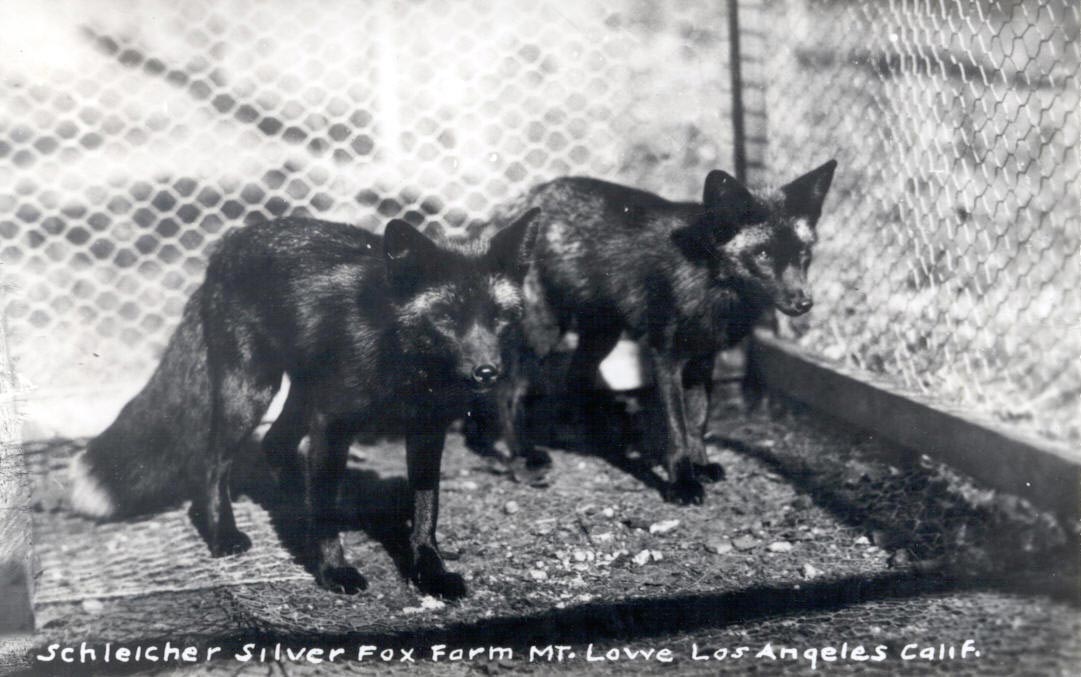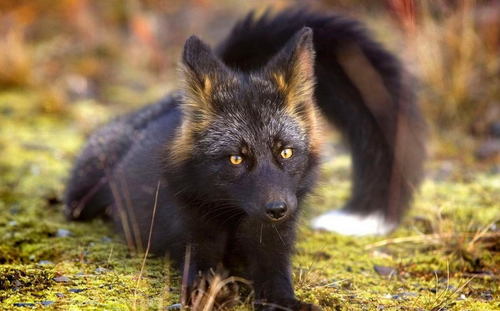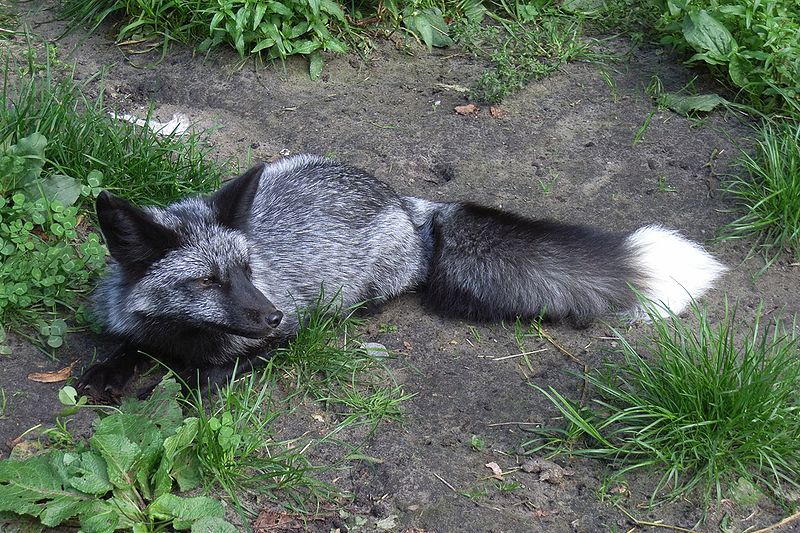Altadena resident, artist and active hiker Doug Meyer was just starting the ascent up Echo Mt. Trail from Altadena when he spied a most unusual creature about a months ago. “I’ve seen bighorn sheep, bobcats and other animals while I’ve hiked,” he says. “This was something I have never seen before.”
On this mid-morning weekday hike, Meyer thought he saw a dog, maybe a Sheltie given the fluffy coat. He was standing a third of the way up the trail. From his vantage point he saw below a black creature wandering by itself, not looking scared, lost or concerned. It was a critter making the rounds. It was all black.
“Then it turned around and I saw that long tail with a pure white tip, and I thought WOW! What is that? That’s a fox! ” recalls Meyer. Unaware that it was being watched, the fox “slipped into a hole in the chaparral. Just vaporized into the landscape.”

Without photographic backup it’s hard to tell what Meyer did see on that early fall day – but the noticeable description of a black fox with a white tipped tail points to the classic description of a silver fox, a melanastic form of the common red fox that were bred and raised primarily for their luxurious pelts. (Think of melanism as the opposite of albinism; even though red and silver foxes may seem like relatives, they are the same species but with different mutations.)
If Meyer DID see a silver fox that day, the million dollar question is “Where did it come from?”
It’s not entirely unusual for non-native critters to be discovered wandering in our local forests and open spaces, according to California Fish and Wildlife Biologist Leslie Welch. “We do see non-native wildlife that have escaped captivity or have deliberately been released,” she writes in an email. “There was recently a monkey in the trees behind my office.”
But SoCal silver foxes official sightings or encounters is a big zero. “My CDFW counterpart works with a lot of trappers and hunters and said that none of them have ever mentioned seeing a silver fox,” she relates. “Of course, anything is possible.
Another theory about Meyer’s sighting involves a chapter of SoCal history when our locale forests were home to tens of thousands of silver foxes. Because of the cool climate, open spaces and access to distribution channels, a thriving fox farm industry burst onto the SoCal landscape in the 1920s and 30s. The Schleicher Fox Farm, a tourist attraction, was located near Mt. Lowe, but most farms were located in the Big Bear area. Fox farming was a Big Bear big business in the 1930s.

First in Big Bear was the 48-acre Borestone Ranch started by R.T. Moore of Maine, says Big Bear historian Mark Durban. “Moore’s endeavor was easily copied by his neighbors,” says Durban about the farms that sprung up practically overnight.
During the peak years in the 1930s, there were 27 different fox farms in the area, eight of them large, full-time operations. One such farm, All Star Fox Farm, was producing more than 1,000 pelts a year. Farmers could receive as much as $1,100 for one high-quality pelt. To supply other farms with start-up animals, a superior breeding pair could be worth $2,000-$3,000.
Silver foxes – named for their silver-tipped tails – were genetically developed for farming from the common red fox in the 1890s by two Canadians, Sir Charles Dalton and Robert Oulton. Pen-raised silver foxes, however, were a handful to manage. They required diligent care and feeding; the foxes themselves could be anxious and unpredictable. According to Durban, many farms had “watch towers” where humans monitored the foxes from above. “Some of the old pens are still around here,” he adds.
Fox farms were phased out in the late 1930s for many reasons, but most notably from the increased cost of food, a 20 percent luxury tax and the fact that Russia and other countries saturated the world market with shiploads of fur.
It’s unclear how the Big Bear and Mt. Lowe fox farms closed their doors. Did they open the cages and let any remaining foxes run free? Did any foxes escape on their own? In 1962, three silver foxes were donated to Big Bear’s Moonridge Zoo, an homage to the area’s once thriving fur farming industry.

“There is no way that some of them didn’t escape or were let go,” surmises Durban about the possibility of silver foxes putting down roots and surviving in the SoCal forests. A natural sense of avoidance and secrecy could, in theory, keep these once-prized foxes out of the public eye. And, to stretch the assumption even further, if they did mate with the local gray foxes, maybe they’ve unintentionally bred out their black fur characteristics, so now they conveniently blend into the landscape?

The big question: is the SoCal silver fox just a historical footnote or the real deal? The answers, just like the foxes themselves, are elusive.
“I’ve seen all sorts of wildlife here: bears, bobcats, raccoons but I’ve never even seen a fox here,” admits Durban about the general secretive nature of foxes.
Noted camera trapper Robert Martinez has captured numerous frames of bears, mountain lions, and assorted wildlife in the local San Gabriel Mountains; he has captured gray foxes in his stunning videos, but says he has never discovered a silver fox.
As for hiker Doug Meyer: he’ll be on the lookout every time he’s up in the hills, wondering if he’ll once again see that magnificent black and silver-tipped critter wandering around the trails. “It was amazing,” he says. “I sure hope it wasn’t an once-in-a-lifetime thing.”
By Brenda Rees
Big Bear history facts from “Big Bear: The First 100 Years,” by Tom Cord

